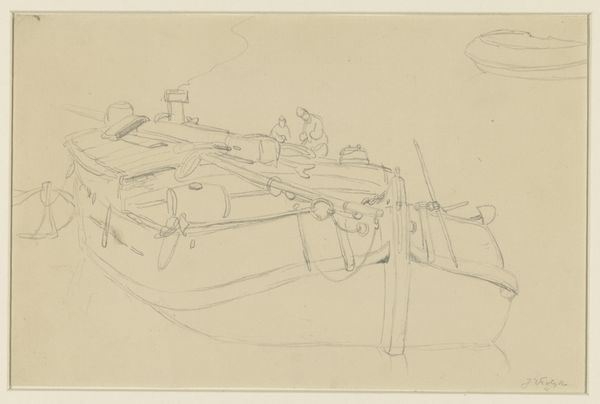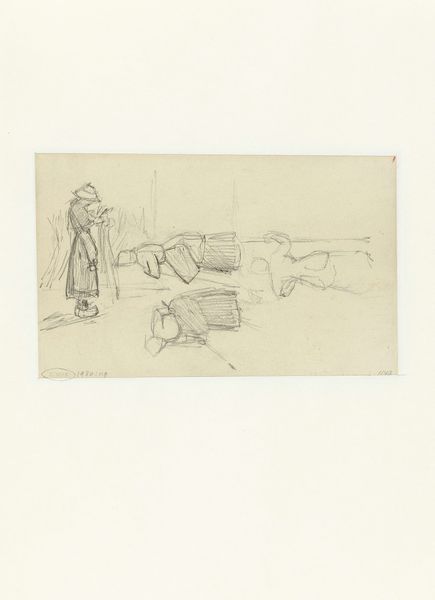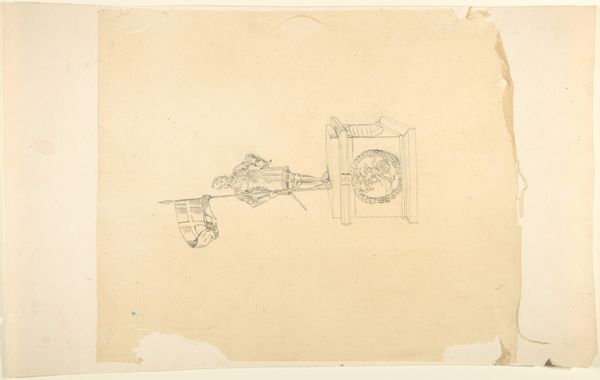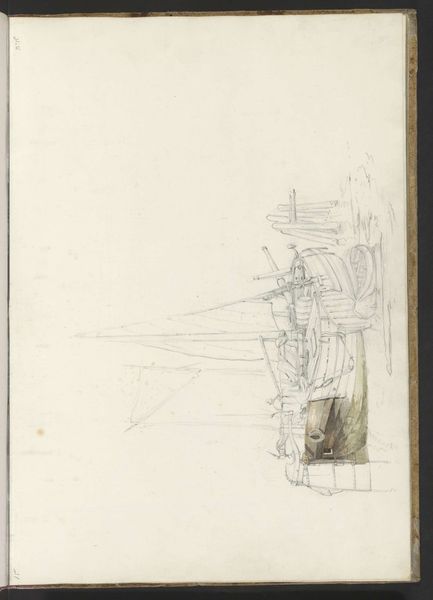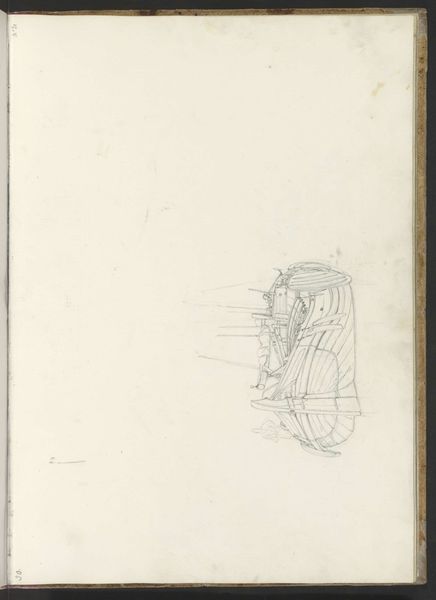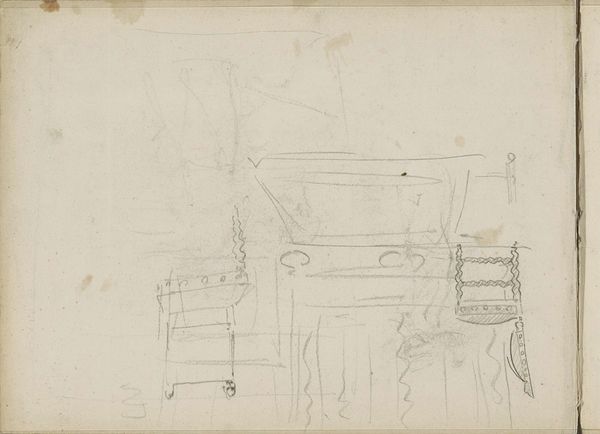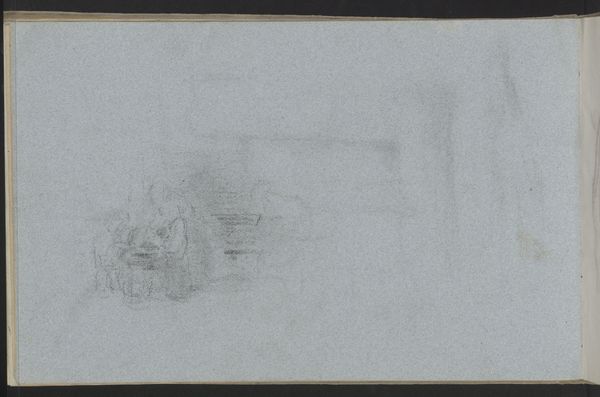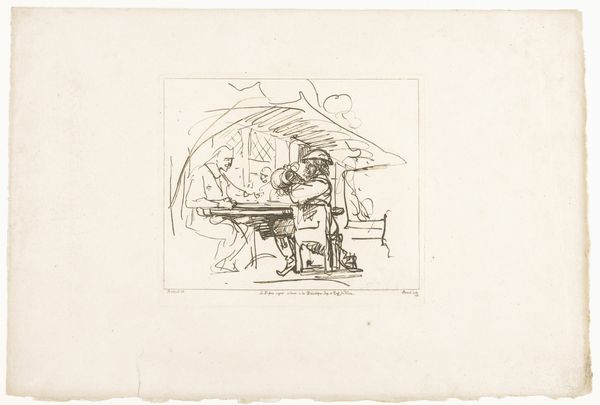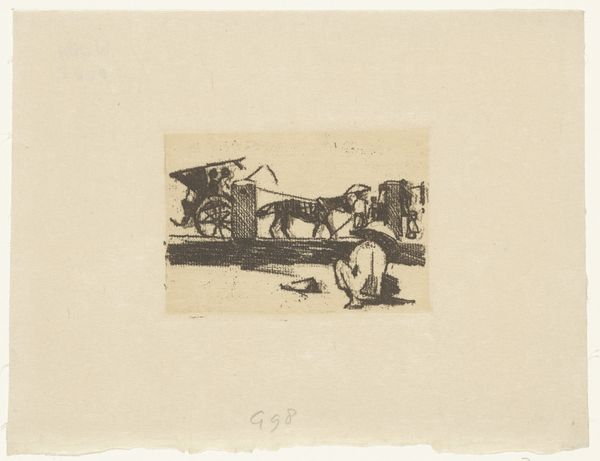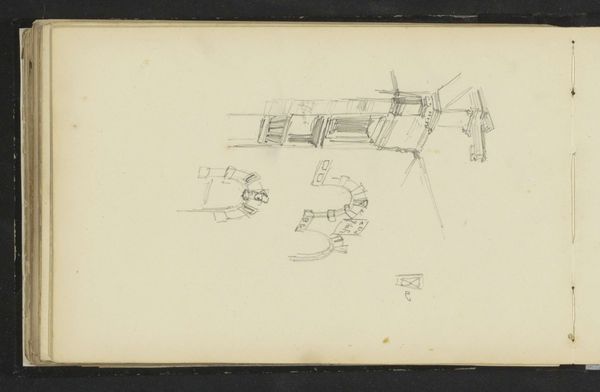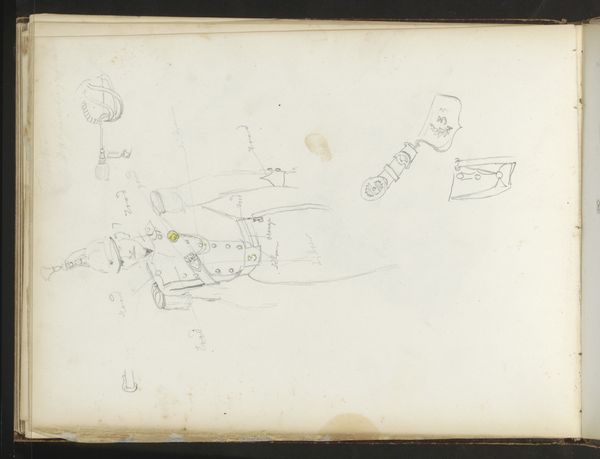
drawing, pencil, graphite
#
drawing
#
aged paper
#
light pencil work
#
ink paper printed
#
sketch book
#
incomplete sketchy
#
landscape
#
personal sketchbook
#
sketchwork
#
pencil
#
graphite
#
sketchbook drawing
#
storyboard and sketchbook work
#
sketchbook art
#
realism
Dimensions: height 350 mm, width 268 mm
Copyright: Rijks Museum: Open Domain
Curator: Here we have George Hendrik Breitner’s “Geschut, met voorwagen," a graphite drawing likely dating between 1867 and 1923, housed right here at the Rijksmuseum. Editor: Wow, it’s like a ghost of a machine, a faded memory on aged paper. All those lines, like a quick thought scribbled down, barely held together. Does it give anyone else the shivers, just a little? Curator: Well, consider Breitner’s intense engagement with the industrialization of the Netherlands. These sketches—and it's clearly one from his sketchbook—offer insight into how military technology was perceived and integrated into daily life. Editor: Integrated? Or looming? There’s something about the starkness, the incompleteness, that makes it feel less like documentation and more like a half-formed fear. It's like he caught this contraption mid-nightmare, wouldn’t you say? Curator: Perhaps. But looking closer, we see the economical use of graphite. It seems his intent was not to glorify machinery, but to study its form, function, its construction. This artwork points at the working process inherent to its making. Editor: True, those quick lines also read like energy. And yes, that speaks to a process, a fast act of observing and then sketching something down. What a fascinating study of form though. I keep wondering about the soldiers using these. Did they sketch too? Curator: A compelling thought. In many ways, this sketchbook drawing gives us more intimate contact with that period than any posed official rendering. The direct link with Breitner himself is powerful here. Editor: It is that! There’s a certain vulnerability to something unfinished. I mean, imagine carrying around sketches of weapons…what kind of energy does that carry into the work itself, and what kind does it leave with you? Curator: An interesting question, especially considering the time period and what was on the horizon regarding industrial wars. It's definitely food for thought and a glimpse into the artist's material reality. Editor: Absolutely, makes one ponder what else lurks, half-formed, on the edges of our perceptions. Thank you!
Comments
No comments
Be the first to comment and join the conversation on the ultimate creative platform.
